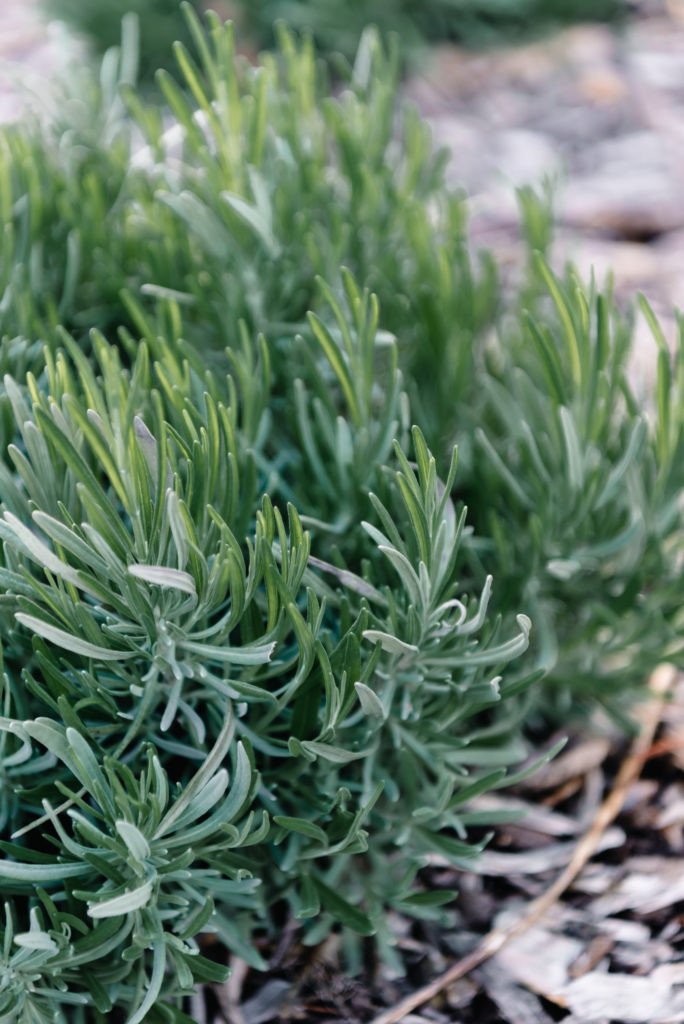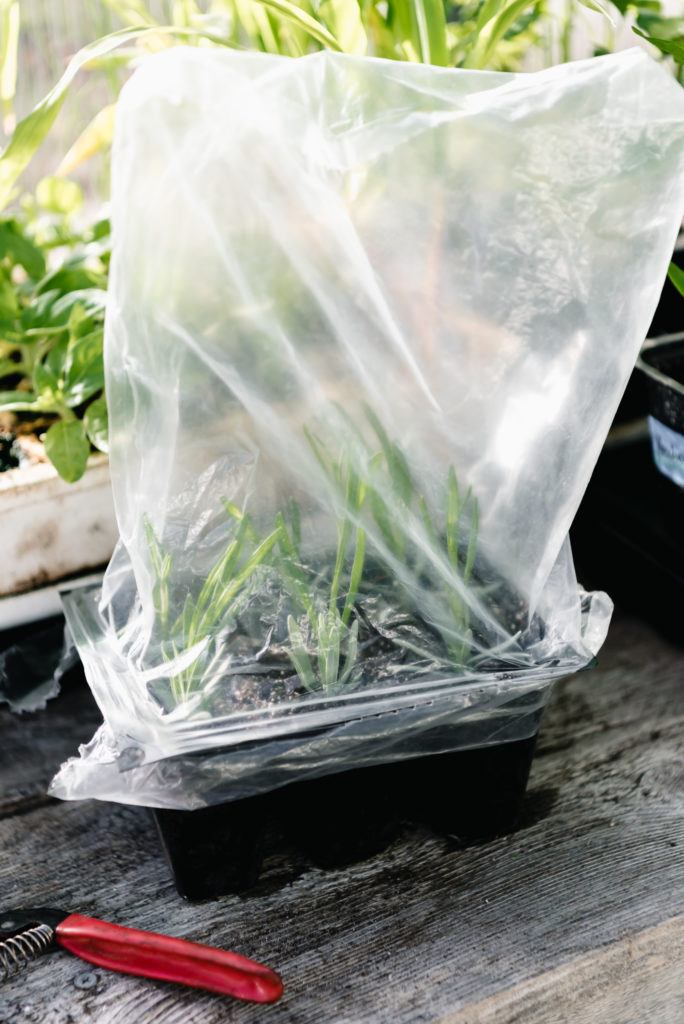
How To Grow Lavender From Cuttings
Save money with this simple trick.
Planting a perennial ornamental garden can get expensive, quick. With a little time and patience, you can grow many lavender plants from the cuttings of one plant, for free.
I’ve been propagating my favorite variety of lavender for two years, and now have 14 new plants from just one original lavender plant.

When to collect lavender cuttings
Late spring will be the best time to collect lavender cuttings to grow more lavender plants. You’ll want to collect cuttings while the plant is putting lots of energy into fresh green growth, and not into flowering.
The exact timing will depend on where you live and the general coolness of the spring season. Here in my zone 6 garden, I collect lavender cuttings in late April or early May.
In the photo below, you’ll see a healthy lavender plant that I grew from a cutting. It’s now ready to share more cuttings for another generation of lavender plants.

Supplies to grow lavender from cuttings
Gather your supplies and make space for a few plants by a sunny window (or a greenhouse if you’re lucky!).
Here are the supplies you’ll need:
Healthy lavender mother plant: Only take cuttings from healthy plants that are vibrant and willing to share. The mother plant doesn’t need to be huge, but it will recover easier if it’s not too small. It will also be less noticeable where you took your cuttings.
Clean, sharp pruners: Make sure they’re clean, I mean it! Your cuttings will have the best chance of survival if they haven’t been exposed to invisible diseases.
Potting mix: Preferably sterile, soilless mix that you would use for seed-starting. The cuttings don’t need any special nutrition at this stage, just a medium to get roots going.
Pots: Narrow but deep pots will work best for your cuttings. Don’t give them too much room (a smaller pot is better) but enough to bury the stem so that it’s not sticking out of the top. You’ll see in the photo above that I like to reuse 6-packs from any garden store purchases (after disinfecting them, of course).
Clear plastic bag: Any old clear plastic bag will work here. We’re just creating a little humid greenhouse effect for the cuttings to live in while they start growing roots.
Watering can: Consider a very gentle watering can so not to flood the cuttings. Overwatering can cause rotting, and under-watering will dry out the newly established roots.

Collect lavender cuttings
- Prep your pots: Fill your pots with pre-watered potting mix. Make sure there are no air spaces in the pot where the roots could dry out.
- Cut:: Find a fresh green stem that is flexible and not too woody, a few inches long. Using your clean, sharp pruners, collect the amount of cuttings you’d like. Be sure not to take too much from one plant.
- Strip the lower leaves: This isn’t an exact science, but I’ve had success stripping away the lower half of the leaves on each cutting.
- Insert into pots: Right after you’ve stripped the lower leaves on the lavender cutting, insert it into the soil until the remaining leaves are flush with the soil.
- Add a plastic bag: Your cuttings will have the best chance of survival when they can grow in a mini-greenhouse humid environment. A clear plastic bag that fits loosely over the pots will do. Keep the plastic bag off the cuttings by using a chopstick, or other small stick to keep the bag upright. This isn’t always necessary depending on the sturdiness of the bag you’re using.
- Water: Check on your cuttings each day and water as needed. They don’t want to be too wet (they’ll rot) and they don’t want to dry out (the roots won’t grow). Place them in a sunny and warm spot.
- Test: After about 5 days you can remove the plastic bag. Another week or two later, give each cutting a gentle tug. If there is resistance, there are roots forming! If there is no resistance, give them some more time.
- Plant: Once you have roots forming the lavender can be transplanted in the garden. However, I like to let each plant leaf out a bit more in the pot before transplanting to make it’s life a little easier.
Questions about growing lavender from cuttings
How long will it take for the cuttings to grow?
Totally depends on the climate they’re growing in, but generally they should have roots within a few weeks.
My cuttings turned brown and shriveled up. Are they still alive?
No, they didn’t take. Hey- it’s OK! Try again. I’ve never had 100% success rate with all cuttings, so even if you get one that takes, call it a win.
Do I need to use rooting hormone?
You can, but I’ve had success without it. Lavender is an easy one to propagate, so save the rooting hormone for more difficult cuttings.
Can I use honey instead of rooting hormone?
I actually did an experiment about 10 years ago that compared the success of cuttings using honey vs. nothing at all. I saw no difference in the cuttings success rate using honey vs. nothing at all. Save your honey for your tea!
Why do my lavender cuttings keep dying?
They may be over or under-watered. They might be too cold or too hot. If you keep experiencing bad results, try something a little different each time and find what works.

Did you enjoy this post?
Please let me know what you think!
Leave a comment below and tag @growingwithgertie on Instagram.
Some of the links listed are affiliate links. This means if you click on a link and purchase the item, I will receive an affiliate commission from the retailer at no cost to you. Thanks for your support!